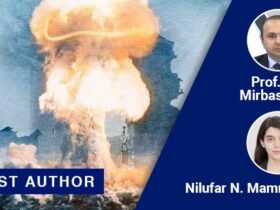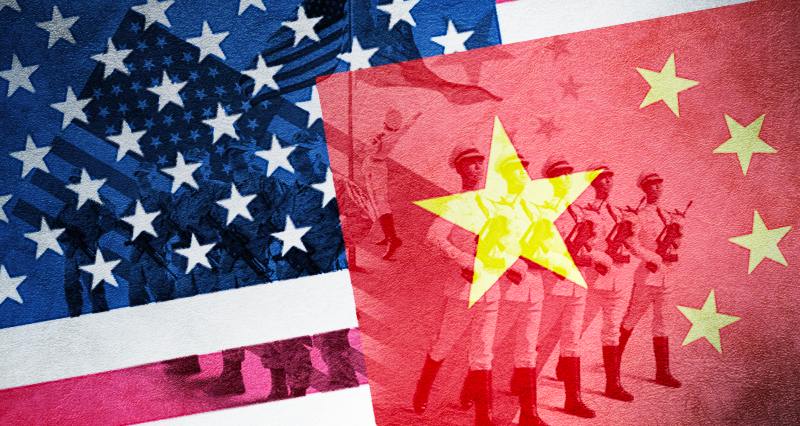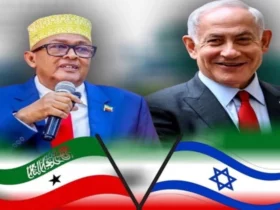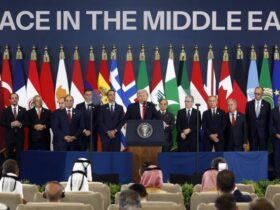Neither recent nor just a trade war: The background of the US-China conflict.
Neither recent nor just a trade war: The background of the US-China conflict.
By Sergio Rodríguez Gelfenstein
Many people may think that the conflict between the United States and China is recent and that characterizing it as a “trade war” helps explain its essence, but neither is true. Exalting this confrontation within the framework of these two particularities leads to analytical errors and, to a greater extent, flaws in understanding the phenomenon and erroneous conclusions about it.
Although the so-called “trade war” between the United States and China was formally unleashed by President Trump in March 2018, its origins can be traced back as far as 1992, the administration of George W. Bush. As is almost always the case, the apparent objectives of a U.S. foreign policy action are hidden behind others that reveal the true background of the matter.
Henry Kissinger’s two trips to China in 1971 and President Richard Nixon’s in 1972 paved the way for the establishment of relations between the two countries. In practice, it was an alliance against a common enemy: the Soviet Union.
Everything went well, bilateral relations grew, and trade grew even more so until the dissolution of the Soviet Union in December 1991, which ended the Cold War and the bipolar world. The planet entered a chaotic period of uncertainty that came to an end in September 2001, when, following the terrorist attacks in the United States, President Bush took advantage of the circumstances to propose building a unipolar international system under US aegis. The honeymoon between the two powers came to an end, and each began to seek accommodation in the new situation.
After September 11, 2001, U.S. foreign policy objectives were redefined, now grouped around the counterterrorism axis established by President George W. Bush. Washington then set out to combat terrorist groups, isolate so-called “rogue states,” and establish loyal governments in West Asia. This meant redirecting the allocation of financial resources intended for military spending to achieve these goals.
In 1992, when the Soviet Union had already disappeared and the socialist bloc no longer existed, the “permanent dominance doctrine” (PDD) was enunciated in the United States. It did not clearly establish who the rivals of the North American power would be once the bipolar world was eclipsed. Analysts and strategists could not agree, nor did they even clearly visualize the characteristics of the new international system now that the Cold War had ended. The PDD had reached its peak in the final years of the 20th century, when a definition was sought for the main enemy in the new era that was beginning.
In the century just beginning, the terrorist attacks of September 11th changed the way we perceived the international situation, allowing the DDP to take root in Washington’s highest political and military commands. In this context, doubts about who would be the United States’ enemy in the coming period had been clarified; strategists had determined that the only power capable of challenging the United States was China.
Condoleezza Rice made this point repeatedly, even before she was appointed National Security Advisor at the start of the Bush administration in January 2001. In 2000, while holding the not-so-pompous position of foreign policy advisor to the presidential candidate, Rice inconspicuously warned about the need to contain China on the grounds that, as China’s development inevitably progressed, it would challenge the United States’ core interests. In this sense, she outlined an inevitable clash of wills, primarily in the Asia-Pacific region, especially if the United States persists—as she believed it should—in strengthening its strategic alliance with Taiwan.
Rice, who would later be appointed Secretary of State, established her primary interest in this matter, warning that the United States would not face a traditional rival but one that would initially aspire to regional power, and that, if it wanted to confront it, the North American power should strengthen cooperation with Japan and South Korea, increase its military presence in the region and bet on the strengthening of India in order to generate a situation of strategic balance in Asia, transforming the latter country into the main partner of the United States in the objective of building an alliance against China.
As the Spanish academic Pablo Bustelo stated in an essay published in 2004, it was precisely the “China issue” that would become a key element in the resignation of General Colin Powell as Secretary of State and his replacement by Rice in January 2005 at the beginning of Bush’s second presidential term. The truth is that what could be called the Rice Doctrine on China has continued and deepened during subsequent administrations, both those of Democrats Barack Obama and Joe Biden and those of Republican Donald Trump. Rice’s enthronement marked the end of a sort of friendly rapprochement between the United States and China during the period 2001-2004 when, in the wake of the attacks of September 11, 2001, both powers collaborated in the fight against terrorism.
As National Security Advisor, Rice had unbridledly devoted herself to applying her precepts in matters of foreign policy, dissolving any type of possibility of détente and peaceful and cooperative rapprochement not only with respect to China, but in general in relation to other powers.
Rice’s obsession with these issues was such that she was even accused of neglecting other matters, including the very important and transcendental issue of the fight against terrorism that led to the events of September 11, in response to which the US authorities ignored the warnings and failed to prevent the incident.
The war on terror marked a turning point in U.S. foreign policy. It sought to demonstrate that the use of force would be the “ordering element” of an international system that was intended to be unipolar through its use.
In this context, China took advantage of this period of “distraction” by the United States, during which the latter was playing war games as a way to intimidate the planet, sowing terror as a weapon of intimidation so that no one would dare challenge its power. While this was happening, the Asian giant reached the culmination of the second stage of the plan designed to implement the reform and opening-up policy, characterized by a process of gradual industrialization and expansion of China’s outreach, with the focus of development shifting from rural to urban areas.
On a global level, the United States’ intention was to take advantage of the terrorist actions of dubious origin that took place on September 11, 2001, in New York and Washington to finalize the construction of a New World Order that had not been possible since the disappearance of the Soviet Union and the end of the bipolar world in 1992.
As mentioned earlier, General Powell’s departure from the State Department in 2005 marked a momentous change in Sino-US relations. Rice was on very close terms with Donald Rumsfeld, the Secretary of Defense. Rumsfeld was part of the ” Project for a New American Century,” a neoconservative think tank created in 1997 with the goal of promoting US global leadership through a much more offensive doctrine of deterrence. Once he arrived at the Pentagon in 2001, he began to put into practice this idea, which had been developed by far-right theorists linked to the Republican Party, such as William Krystol, Paul Wolfowitz, Francis Fukuyama, Richard Armitage, Dick Cheney, Robert Kagan, John Bolton, and Zhalmay Khalilzad among others.
Thus, the rapport between Rice and Rumsfeld was immediate. Rumsfeld thus focused on “demonstrating the danger” posed by what he called Chinese militarism, warning that this was the primary expression of a threat to regional peace and security.
Meanwhile, in 1997, China considered that the second phase of its reform and opening-up policy had been completed three years ahead of schedule, which allowed for a more precise design of the objectives and tasks of the third phase, which were discussed at the 15th Congress of the Communist Party of China held that year. China aimed to enter the new century with a clear vision of the path ahead. In this sense, the intention was to arrive at the end of the first decade of the 21st century with a doubling of the GDP of the year 2000, thereby improving the population’s living conditions and stabilizing the socialist market economy.
These decisions would raise alarm in Washington. As Michael Klare recalls, in February 2005, Rice and Rumsfeld met in Washington with senior Japanese officials, with whom they signed a military cooperation agreement. The document, called the “Joint Statement of the U.S.-Japan Consultative Committee,” aimed to increase collaboration between the two countries in conflict-ridden areas of the seas adjacent to China. Similarly, both sides discussed and agreed on a policy toward Taiwan, which even established a scenario for joint action should the island declare independence.
Of course, this bellicose atmosphere has raised alarm bells in China, which has always been concerned about the possibility of a re-militarization of Japan, which the West has surreptitiously encouraged and which, in the case of China, recreates the terrible human rights violations committed en masse by Japanese troops during their occupation of part of Chinese territory from 1931 to 1945.
At this point, Henry Kissinger’s opposing reflection on the current situation is interesting. The now deceased but ever-present former Secretary of State during the administrations of Richard Nixon and Gerald Ford believed that Jiang Zemin (1993-2003) was the last Chinese president with whom the United States primarily engaged in dialogue about bilateral relations. After him—again, according to Kissinger—the two powers reached collaborative perspectives, which was possible despite not having a common enemy [he was referring to the Soviet Union] as in the past. However, he asserts that they had not developed “a shared understanding of the world order” either.
The analysis by the former National Security Advisor also placed the dawn of the new millennium as the moment that marked the beginning of a new relationship between the two countries. In China, President Hu Jintao and Premier Wen Jiabao, leaders of the “fourth generation,” had come to power, while in the United States, George W. Bush first and Barack Obama later took office.
This is the scenario in which the shift in disposition occurred, highlighting the United States’ need to contain China. The American power began to perceive that the Asian giant already possessed enormous regional influence through which it could challenge US superiority in the region. It watched with horror as China advanced toward profound strategic, tactical, operational, and logistical transformations in the structure of its armed forces, based on achieving self-sufficiency in weapons, equipment, and technology.
Hence, the tandem formed by Rice (in political and diplomatic terms) and Rumsfeld (from a military perspective) built the axis around which China began to become the main enemy on the political stage, considering a global strategic outlook for the 21st century. However, any serious military analyst could determine that this supposedly exaggerated and accelerated growth of China’s military potential was far from that of the United States; even today, 25 years later, the gap between the two remains monumental. Hence, for many analysts, it became necessary to search for the real causes that would allow them to understand why the “China danger” was beginning to be recognized as the main threat to the United States.
The answer can be found in the realm of geopolitics. China’s expanding relations in its immediate and immediate surroundings, its friendly rapprochement with traditional US allies in the region such as Thailand and Indonesia, as well as China’s growing presence in Central Asia and its growing ties with major oil and gas producing countries in West Asia, all contributed to this view. At the same time, the Bush administration was “distracted” by putting its best foot forward in the wars in Afghanistan and Iraq and in the political control of those regions. Viewed from a Cold War perspective, it was possible to envision a confrontation with China that raised alarm bells in Washington.
Despite this, the Bush, Obama, and Trump administrations, each in their own way and based on their own doctrines, unleashed an escalation of pressure and aggression against China, which resisted confrontation. During Donald Trump’s first administration, the conflict reached dangerous levels not only for bilateral relations but also negatively impacted stability, economic development, and global peace.
In March 2018, President Trump adopted unilateral measures that substantially increased tariffs on Chinese products. China responded with similar actions, but the United States also moved into other areas that had remained largely untouched by the core of the dispute: sanctions began against Chinese companies, especially those in the technology sector, academic exchanges between the two countries were limited, restrictions were placed on the media, and other actions quickly deteriorated relations.
In addition, the United States has publicly positioned itself on internal issues that China considers to be its sole concern, such as the human rights situation in Xinjiang and Tibet, its direct interference in fueling the violent actions of protesters in Hong Kong in 2019, and its violation of the agreements governing bilateral relations, based on three documents signed at different times in history that are based on the recognition that there is “One China.”
The United States questioned Taiwan’s belonging to China—as no other US president had done since the normalization of relations in 1972—and even went so far as to increase Washington’s military aid to Taipei, beyond any limits. Similarly, the United States increased its presence in the South China Sea, carrying out constant provocative maneuvers that placed that region in the world under the dubious designation of the most dangerous place on the planet where a nuclear conflagration could begin.
All of this has awakened China from its “golden dream,” in which it considered the United States a friendly country. At least in its public rhetoric, and without resorting to provocation, maintaining its rhetoric of non-aggression and peaceful coexistence, it has been forced to make decisions to safeguard its sovereignty, its territorial integrity, and in defense of its development plans and projects. This policy continued during the Joe Biden administration, which made no major changes, but rather continued the legacy of its predecessors.
Thus, the confrontation that began during the administration of President George W. Bush found China in a position of political and economic stability that allowed it to confront an unforeseen reality. From that moment until 2019, China still believed it was possible to build its economic model and society without strategic confrontations of any kind. At all times, it avoided confrontational rhetoric, consistently asserting that it did not aspire to global hegemony or pose a threat to any other country. Its foreign policy philosophy is based on cooperation, multilateralism, and the practice of win-win, avoiding the zero-sum doctrine inherent in bipolar systems.
TO BE CONTINUED…

















Leave a Reply